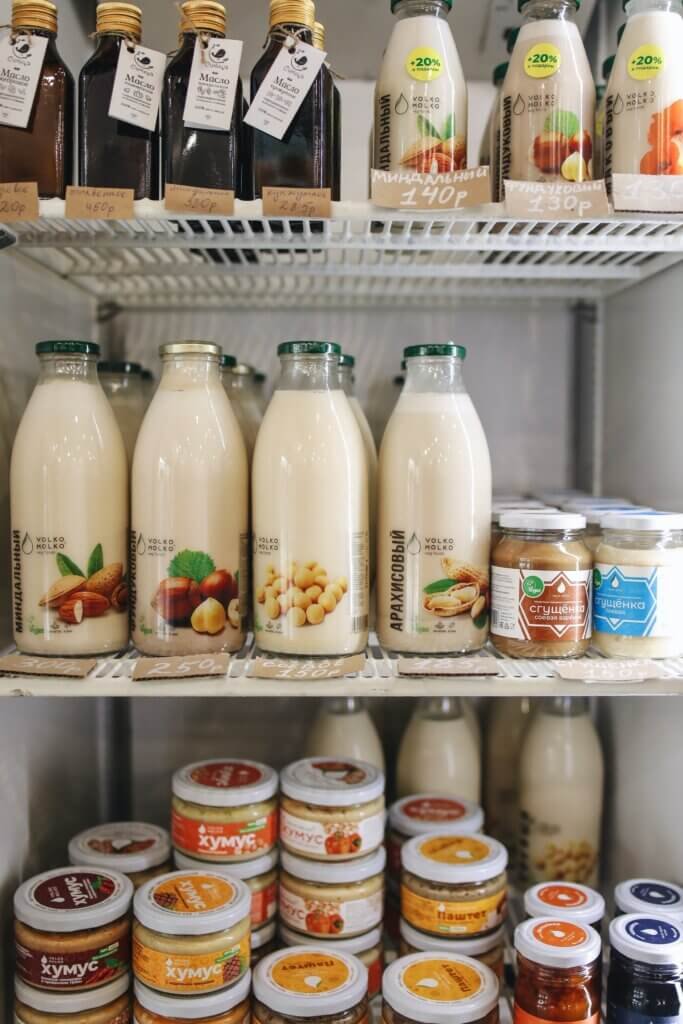Did you ever find yourself halfway through a recipe, only to realize that you’re missing a crucial ingredient? Don’t panic! Learning how to substitute ingredients in recipes can save the day and ensure your dish turns out just as delicious. From swapping out milk for buttermilk to using applesauce instead of oil, this article will guide you through the art of ingredient substitutions, helping you achieve culinary success even when unexpected hurdles arise.

Understanding Ingredient Substitutions
When it comes to cooking and baking, sometimes you find yourself missing a key ingredient. But don’t worry, because there are plenty of alternatives that can save the day! Understanding ingredient substitutions is essential for any home cook or baker. Whether you’re looking to accommodate dietary restrictions, make healthier choices, or simply work with what you have on hand, knowing how to substitute ingredients can help you create delicious dishes every time.
Why Substitute Ingredients?
There are several reasons why you might need to substitute ingredients in a recipe. One common reason is catering to dietary restrictions or food allergies. For individuals who are lactose intolerant, vegan, or have a milk allergy, finding dairy alternatives becomes crucial. Additionally, people following low-carb or gluten-free diets may need to replace certain ingredients to fit their nutritional needs.
Another reason to substitute ingredients is to make healthier choices. For instance, replacing butter with a healthier oil or using natural sweeteners instead of processed sugar can contribute to a more nutritious diet. Substituting ingredients can also come in handy when you unexpectedly run out of a specific ingredient, saving you a trip to the grocery store.
Considerations for Substituting Ingredients
Before diving into specific ingredient substitutions, it’s important to consider a few factors. One of the most crucial considerations is the flavor profile of the ingredient you’re substituting. Some ingredients have strong characteristic flavors that may significantly impact the overall taste of your dish. Make sure to choose a substitute with a similar flavor profile to maintain the desired taste.
Another factor to consider is the texture and consistency of your final dish. Certain ingredients, such as eggs or flour, contribute to the structure and texture of baked goods. When substituting these ingredients, you need to find alternatives that can provide similar binding or leavening properties. Otherwise, you may end up with a finished product that differs from your expectations.
Lastly, keep in mind the nutritional content of the original ingredient and its substitute. If you’re aiming for a healthier dish, choose substitutions that align with your nutritional goals. Pay attention to the calorie, fat, sugar, and carbohydrate content when making ingredient substitutions.
Effect of Substitutions on Flavor, Texture, and Consistency
When you substitute ingredients in a recipe, it’s important to consider the potential impact on flavor, texture, and consistency. The flavor profile of your dish may change slightly or significantly depending on the substitution. For example, replacing butter with a healthier oil like olive oil can alter the taste and richness of your dish. It’s essential to experiment and adjust the seasoning accordingly to ensure the final flavor is balanced.
Texture and consistency can also be affected by ingredient substitutions. Ingredients like flour and eggs contribute to the structure and texture of baked goods. If you substitute them with ingredients with different properties, such as gluten-free flour or applesauce, the final product may have a different texture. Understanding these changes and making adjustments as necessary will help you achieve the desired results in your recipes.
Ultimately, the success of ingredient substitutions relies on experimentation, trial, and error. Don’t be afraid to try different substitutions and make adjustments to suit your taste and dietary preferences. With practice and creativity, you’ll become a master at substituting ingredients and creating delicious dishes without the need for exact recipe adherence.
Common Ingredient Substitutions
Now that you understand the importance of ingredient substitutions, let’s explore some common substitutions for various ingredients commonly found in recipes.
1. Butter
Butter is a beloved ingredient in baking, but it’s not always the healthiest choice. If you’re looking to reduce saturated fats or follow a vegan lifestyle, there are alternatives available. Coconut oil, avocado, and nut butters are great substitutes for butter in some recipes. They can add moisture, richness, and a unique flavor to your dishes while offering healthier options.
2. Sugar
Whether you’re watching your sugar intake or looking for more natural alternatives, there are plenty of substitutes for granulated sugar. Stevia, honey, maple syrup, and coconut sugar are popular choices. Keep in mind that these alternatives may affect the texture and sweetness of your recipes, so you might need to adjust other ingredients accordingly.
3. Flour
Flour is a staple in baking, but it may not be suitable for everyone’s dietary needs. Gluten-free flour alternatives, such as almond flour, coconut flour, or oat flour, are excellent options for those with gluten sensitivities. Additionally, whole wheat flour can replace all-purpose flour in many recipes, providing added nutritional benefits.
4. Milk
If you’re lactose intolerant or following a vegan diet, there are several dairy-free milk options available. Almond milk, oat milk, soy milk, and coconut milk are all suitable substitutes for regular cow’s milk. Keep in mind that different milk substitutes may have distinct flavors and consistencies, so choose the one that best complements your recipe.
5. Eggs
Eggs are a common ingredient in baking as they provide moisture, structure, and binding properties. Fortunately, there are several egg alternatives for those with egg allergies or following a vegan lifestyle. Applesauce, mashed banana, tofu, or flaxseeds mixed with water can be used as substitutes, depending on the recipe’s requirements.
6. Oil
While oil is commonly used in cooking and baking, there are healthier alternatives you can use. Greek yogurt, applesauce, avocado, and prune puree can replace oil in various recipes. These alternatives can contribute moisture while reducing the overall fat content.
7. Salt
If you’re looking to reduce salt intake or simply run out of salt, there are alternatives to enhance flavors in your recipes. Using herbs and spices can add depth and complexity to your dishes without relying on excessive salt. Experiment with different combinations to discover your favorite flavor profiles.
8. Baking Powder
Baking powder is a leavening agent commonly used in baking. If you find yourself without it, don’t worry! You can substitute baking powder with a combination of baking soda and an acidic ingredient like lemon juice or vinegar. This mixture will still provide the necessary rise and lightness to your baked goods.
9. Herbs and Spices
Recipes often call for specific herbs and spices, but you can always get creative and experiment with different combinations. If you’re missing a particular herb or spice, try substituting it with a similar one. For example, if a recipe calls for basil but you only have parsley, go ahead and use it!
10. Chocolate and Cocoa
Dark chocolate can be a healthier alternative to traditional chocolate, as it contains less sugar and more cocoa solids. Carob is also a great option for individuals with a chocolate allergy. Additionally, cocoa powder can be used to replace melted chocolate in recipes, adding a rich chocolatey flavor without the added fat and sugar.

Substituting Dairy Products
For those with dietary restrictions or opting for a plant-based lifestyle, finding dairy alternatives is essential. Let’s explore some options for substituting milk, butter, cream, and cheese in your recipes.
Finding Dairy Alternatives
In recent years, there has been a surge in dairy alternatives available on the market. Almond milk, soy milk, coconut milk, and oat milk are just a few examples. These plant-based milks offer a similar creamy texture and are suitable for cooking and baking.
Substituting Milk
When a recipe calls for milk, you can generally substitute dairy-free milk alternatives on a one-to-one basis. Make sure to choose unsweetened versions of these milks to avoid adding excess sweetness to your dishes. Keep in mind that different plant-based milks may have distinct flavors, so choose the one that complements your recipe best.
Replacing Butter
Butter adds richness and flavor to many recipes, but you can replace it with healthier alternatives. Coconut oil, avocado, olive oil, and nut butters can all be used to replace butter in various dishes. Remember to consider the flavor profile of the substitute to ensure it complements the other ingredients in your recipe.
Swapping Cream
When a recipe calls for heavy cream, you can use coconut cream or full-fat coconut milk as a substitute. These alternatives provide a similar creaminess and can be used in both sweet and savory recipes. For a lighter option, you can use cashew or almond cream, but keep in mind that the flavor may be slightly different.
Using Cheese Substitutes
Cheese adds flavor and texture to many dishes but can be challenging to replace. Fortunately, there are several vegan cheese options available, made from plant-based ingredients like nuts, seeds, and soy. These cheeses can be used in recipes that call for shredded or melted cheese, allowing you to still enjoy cheesy goodness while adhering to a dairy-free lifestyle.
Alternatives for Sweeteners
Whether you’re looking for healthier alternatives to processed sugar or catering to specific dietary needs, there are various options for substituting sweeteners. Let’s explore some natural sweeteners and how you can use them in your recipes.
Finding Natural Sweeteners
If you’re looking to cut down on refined sugars or artificial sweeteners, natural sweeteners can be a great alternative. Some examples of natural sweeteners include stevia, honey, maple syrup, coconut sugar, and agave nectar. These options can add sweetness to your recipes while offering additional nutrients and a unique flavor profile.
Replacing Granulated Sugar
Granulated sugar can be substituted with natural sweeteners like stevia, honey, or maple syrup. Keep in mind that these alternatives may have distinct flavors and consistencies, which can affect the overall taste and texture of your recipes. Adjustments may be necessary to maintain the desired sweetness and consistency.
Using Liquid Sweeteners
Liquid sweeteners like honey, maple syrup, or agave nectar can be excellent substitutes for brown sugar or liquid sweeteners like corn syrup. Keep in mind that their consistency and sweetness may differ from the original ingredient, so adjust accordingly. You may need to reduce the amount of liquid in the recipe to compensate for the additional moisture provided by the substitute.
Substituting Brown Sugar
Brown sugar adds moisture and a distinct caramel-like flavor to baked goods. If you run out of brown sugar, you can create a substitute by mixing granulated sugar with molasses. For every cup of brown sugar, combine 1 cup of granulated sugar with 1 tablespoon of molasses. Adjust the amount of molasses depending on how dark and flavorful you want the substitute to be.
Finding Sugar-Free Alternatives
For individuals looking to reduce their sugar intake or manage conditions like diabetes, there are sugar-free alternatives available. Artificial sweeteners like sucralose, aspartame, or stevia can be used as sugar substitutes. Keep in mind that these alternatives may not provide the same volume, texture, or browning properties to your recipes, so experimentation and adjustment may be necessary to achieve the desired results.

Flour Substitutions for Special Diets
When it comes to flour substitutions, there are plenty of options available for those with dietary restrictions or specific nutritional needs. Whether you’re following a gluten-free, low-carb, or nut-based diet, here are some alternatives to consider.
Gluten-Free Flour Alternatives
Gluten-free diets require avoiding wheat flour and other gluten-containing grains. Fortunately, there are several gluten-free flour alternatives available, such as almond flour, coconut flour, rice flour, or quinoa flour. These alternative flours provide a unique flavor and texture to your baked goods while accommodating gluten intolerances or celiac disease.
Low-Carb Flour Substitutes
If you’re following a low-carb or keto diet, traditional wheat flour may not fit into your nutritional goals. Thankfully, there are low-carb flour substitutes available to create delicious baked goods without the excess carbohydrates. Almond flour, coconut flour, and flaxseed meal are popular choices for those following low-carb diets.
Substituting Whole Wheat Flour
While whole wheat flour is a nutritious choice, you may need to substitute it in certain recipes for various reasons. All-purpose flour can be used to replace whole wheat flour in a one-to-one ratio to achieve a lighter texture. Alternatively, you can explore other whole grain flours such as spelt flour, oat flour, or rye flour to provide similar nutritional benefits.
Finding Nut-Based Flours
For individuals with nut allergies or looking for alternatives, there are non-nut-based flours available. These flours are made from seeds, grains, or legumes and provide unique flavors and textures to your recipes. Some examples include sunflower seed flour, chickpea flour, or sorghum flour. Experiment with different options to find the ones that work best for your dietary needs and taste preferences.
Using Oat Flour
Oat flour is a versatile alternative that works well in many recipes. You can easily make oat flour at home by grinding rolled oats in a blender or food processor. Oat flour provides a mild, slightly sweet flavor and enhances the nutritional value of your dishes. It’s a great option for those looking to add fiber and nutrients to their recipes.
Egg Replacements for Vegan or Allergic Individuals
Eggs play a crucial role in providing moisture, structure, and leavening properties in baking. Fortunately, there are several alternatives for individuals who are vegan or have egg allergies. Let’s explore some substitutes you can use in your recipes.
Binding Agents as Egg Replacements
When eggs act as a binding agent in recipes like meatballs or veggie burgers, flaxseed or chia seed can be an excellent substitute. Mix 1 tablespoon of ground flaxseeds or chia seeds with 3 tablespoons of water. Let the mixture sit for a few minutes until it becomes gelatinous. This mixture serves as a great binding agent while adding essential nutrients like omega-3 fatty acids.
Using Applesauce or Mashed Banana
Applesauce or mashed bananas can be used in recipes that require moisture and binding properties, like muffins or cakes. Use 1/4 cup of applesauce or mashed banana to replace one egg. Keep in mind that these alternatives may add a slight fruity flavor, so choose recipes where the flavor will complement the other ingredients.
Replacing Eggs with Tofu
Silken tofu can be a fantastic substitute for eggs in recipes that call for a creamy texture, such as puddings or custards. Use 1/4 cup of pureed silken tofu to replace one egg. Tofu provides a smooth and creamy consistency while adding protein to your dishes.
Substituting Flaxseeds or Chia Seeds
Ground flaxseeds or chia seeds can also be used as egg replacements in baked goods like cookies or bread. Mix 1 tablespoon of ground flaxseeds or chia seeds with 3 tablespoons of water and let it sit for a few minutes until it thickens. This mixture acts as an excellent binding agent and provides a nutty flavor to your recipes.

Healthy Oil Substitutes
Replacing oil in your recipes can help reduce saturated fat intake and add nutritional benefits to your dishes. Let’s explore some healthier alternatives to oil that you can incorporate into your cooking and baking.
Choosing Healthier Oils
When it comes to choosing healthier oils, consider options like olive oil, avocado oil, or coconut oil. These oils contain healthier fats and provide a unique flavor profile to your recipes. Use them in salad dressings, sautéing, or baking to enhance the nutritional value of your dishes.
Using Greek Yogurt as an Oil Substitute
Greek yogurt is a versatile ingredient that can replace oil in certain recipes. It adds moisture and richness while reducing the overall fat content. For example, you can use Greek yogurt in baking recipes like muffins or cakes. Start by replacing half of the oil with an equal amount of Greek yogurt and adjust as needed based on the desired consistency.
Applesauce as an Oil Replacement
Applesauce is a popular substitute for oil in baking recipes. It adds moisture while reducing the fat content of your dishes. Replace oil with an equal amount of unsweetened applesauce in recipes like cakes, muffins, or bread. Keep in mind that using applesauce may slightly affect the texture and taste of your final product, so adjust accordingly.
Replacing Oil with Avocado
Avocado is a healthy fruit known for its creamy texture and healthy fats. It can be used as a substitute for oil in recipes that require a smooth and rich consistency. Replace oil with mashed avocado on a one-to-one basis to add nutritional benefits while maintaining the desired texture and moisture in your dishes.
Prune Puree as a Fat Substitute
If you’re looking to reduce fat in your recipes, consider using prune puree as a substitute. Prune puree adds moisture and helps retain the texture of baked goods while reducing the amount of fat. Replace half of the fat in a recipe with an equal amount of prune puree for a healthier alternative.
Adjusting the Salt Content
Reducing salt intake can have numerous health benefits, but it doesn’t mean sacrificing flavor. Let’s explore some ways you can adjust the salt content in your recipes without compromising taste.
Reducing Salt in Recipes
To reduce the salt content in your recipes, start by gradually decreasing the amount of salt called for in the recipe. This allows your taste buds to adapt over time. You can cut down the salt by half and gradually reduce it even further until you find the ideal balance of flavor.
Using Salt Alternatives
There are several salt alternatives available that can add depth and flavor to your dishes without relying solely on sodium. Some popular options include sea salt, kosher salt, or Himalayan pink salt. These alternatives have different mineral compositions and can impart distinct flavors to your recipes.
Balancing Flavors without Salt
When reducing or omitting salt, it’s important to balance the flavors in your recipes. You can achieve this by using a combination of herbs, spices, and acids. Herbs like basil, oregano, rosemary, and thyme add aromatic flavors, while spices like cumin, paprika, and curry powder add warmth and complexity. Additionally, acids like lemon juice or vinegar can brighten the flavors of your dishes.
Flavorful Herb and Spice Combinations
Experimenting with different herb and spice combinations is a great way to add depth and complexity to your recipes without relying on excessive salt. For example, Italian seasoning combines herbs like basil, oregano, thyme, and rosemary, creating a classic flavor profile for Italian dishes. Similarly, a combination of cumin, coriander, and paprika can add a smoky and earthy taste to your recipes.

Leaving Out or Replacing Baking Powder
In some instances, you may find yourself without baking powder or looking to avoid it. Fortunately, there are alternatives to create leavened baked goods without the use of baking powder. Let’s explore some options.
Substituting Baking Powder with Baking Soda
Baking soda is a great alternative to baking powder if you find yourself without the latter. However, it’s important to note that baking soda is more alkaline and requires an acid for activation. In recipes that call for baking powder, you can swap it with a combination of baking soda and an acidic ingredient like lemon juice or vinegar. Use 1/4 teaspoon of baking soda with 1/2 teaspoon of lemon juice or vinegar for every teaspoon of baking powder called for in the recipe.
Using Yeast as a Leavening Agent
For yeast-risen baked goods like bread or pizza dough, using yeast as a leavening agent is essential. Yeast provides the necessary rise and texture in these recipes. If a recipe calls for baking powder but you prefer a yeast-based alternative, consider finding a yeast-based recipe instead.
Whipped Egg Whites as a Rising Agent
In recipes that require a light and airy texture, whipped egg whites can be used as a rising agent. This technique is often used in soufflés, meringues, or sponge cakes. Whipping the egg whites to stiff peaks and gently folding them into the batter can create a delicate and fluffy final product.
Indulgent and Healthier Chocolate Substitutions
Chocolate is a beloved ingredient in many recipes, but sometimes you may want to explore alternatives for health or allergy reasons. Let’s explore some indulgent and healthier options you can use as substitutes.
Using Dark Chocolate as a Healthier Option
Dark chocolate is known for its rich flavor and health benefits. It contains a higher percentage of cocoa solids and less sugar compared to milk chocolate. You can use dark chocolate in recipes that call for chocolate chips or melted chocolate, providing a rich and intense chocolate flavor while reducing the overall sugar content.
Replacing Chocolate with Carob
For individuals with a chocolate allergy or looking for a caffeine-free alternative, carob can be used as a substitute. Carob is made from the pods of the carob tree and has a naturally sweet and mild flavor. It can be used in recipes that call for chocolate or cocoa powder, providing a unique taste while accommodating dietary restrictions.
Cocoa Powder as a Chocolate Alternative
If you run out of chocolate or prefer a cocoa-based alternative, cocoa powder can be used in recipes. Cocoa powder has a rich chocolate flavor and can be used to replace melted chocolate in certain recipes. It’s important to note that cocoa powder is unsweetened, so you may need to adjust the amount of sugar or other sweeteners in your recipe.
With these ingredient substitutions in mind, you can confidently embark on your culinary adventures. Don’t be afraid to get creative, experiment, and customize recipes to suit your dietary needs and taste preferences. Understanding how to substitute ingredients opens up a world of possibilities, allowing you to create flavorful and nutritious dishes every time you step into the kitchen. Happy cooking and baking!


